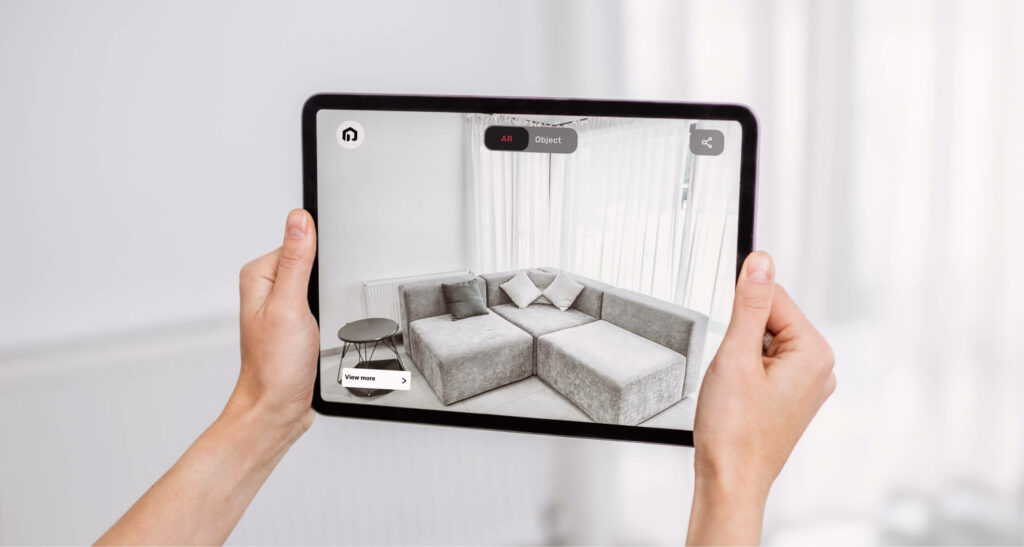What is 3D product visualization?
3D product visualization involves visualizing 3D models and creating photorealistic product rendering and interactive digital representations of products using computer graphics and 3D modeling techniques. These 3D interactive guides allow users to interact with products in a virtual environment, rotating and zooming in to examine the product from multiple angles and even customizing its features.
Key technologies and software in 3D product visualizer include computer-aided design (CAD) software, 3D product visualization agency and 3D product visualization company for creating interactive experiences. And game engines like Unity and Unreal Engine for creating interactive experiences. A robust 3D product viewer is an essential tool for providing an immersive experience to site visitors.
Unlike traditional 2D images, which provide a limited product view, 3D models visualization allow users to interact with products online in a virtual environment, rotating and zooming in to examine the product from multiple angles and even customizing its features.
How can 3D visualization solutions benefit your business?
3D product visualization is a valuable and powerful tool for businesses of all sizes. By incorporating 3D product visualization tools into their operations, companies can increase shopper engagement and enhance an overall viewing experience by providing an easy way to explore a product’s features, fit, and finish in 3D space. This not only attracts more site visitors but also builds brand loyalty.
3D product visualization also significantly impacts product development, reducing the costs associated with prototyping and testing. Furthermore, it allows companies to create stunning product visuals and get a better feel for their products before they reach production. This streamlined customer journey aids customers in making informed decisions about which products best suit their needs, ultimately driving purchase intent and user engagement.
3D product visualizers and augmented reality solutions have gained immense significance for businesses aiming to enhance their advertising and other marketing materials and purposes. These services offer a compelling alternative to traditional photography by creating photorealistic computer-generated imagery (CGI) that showcases product rendering with meticulous attention to material properties.
Companies seeking to improve 3D visualization and augmented and virtual reality can benefit from expert product rendering services, learning how to optimize their visuals and engage customers more effectively.
And most importantly, providing 3D-augmented digital experiences makes it easier for customers to make informed decisions about which products best suit their needs, driving purchase intent.
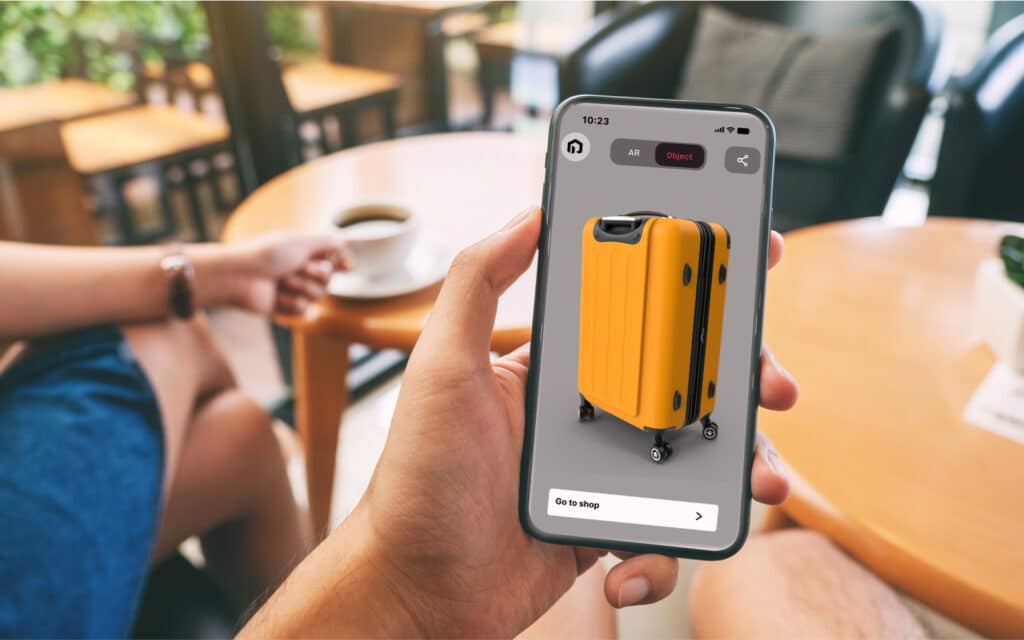
- Business Value:
- Enhances customer engagement and viewing experiences.
- Lowers prototyping and testing costs.
- Provides superior visuals during product development.
- Aids customers in informed product selection, boosting sales intent.
- Enhanced Customer Experiences:
- Offers lifelike interactive experiences compared to 2D.
- Improves product comprehension by viewing from multiple angles.
- Allows a real-time product customization experience and personalization, fostering a sense of ownership.
- Cost-effectiveness and Efficiency:
- Reduces the need for physical prototypes, saving time and money.
- Speeds up decision-making in product development, potentially cutting lead times by 30% using tools like RealityMAX.
- Helps in early detection of design issues.
- 3D models are easier and cheaper to update than 2D photos; they’re 6x more cost-effective than traditional photos.
- Increased Sales and Conversion:
- Engages customers more, increasing purchase likelihood.
- Ensures 3D assets are optimized for faster loading to keep users engaged.
- Reduces product returns by helping customers make informed decisions.
How has 3D product visualization transformed e-commerce?
3D product visualization has transformed e-commerce platforms by enabling brand consistency to embed interactive 3D visuals on their platforms, enhancing the overall online shopping experience. Virtual showrooms present a lifelike shopping scenario, erasing geographical boundaries, and curbing costs. These showrooms, enriched with augmented reality (AR), allow customers to virtually interact with products, giving them a tangible feel without visiting a physical store.
Using AR technology in tandem with 3D product visualizers, customers can virtually try products, from clothing to home decor, directly through their smartphones. This immersive interaction fosters a deeper connection, driving sales.
In the realm of marketing, dynamic 3D animations and videos capture audience attention and foster increased customer experience engagement throughout, while interactive product configurators empower consumers to tailor products to their liking in real-time. On the design front, digital prototyping diminishes the need for physical models, making design evaluation and iteration more cost-effective and rapid. Collaborative design tools streamline the entire development process, facilitating real-time reviews and remote team collaboration.
A standout in this space, product visualizer RealityMAX, offers a better understanding holistic platform for 3D professionals, integrating visualization with collaborative design, ensuring a streamlined product development journey.
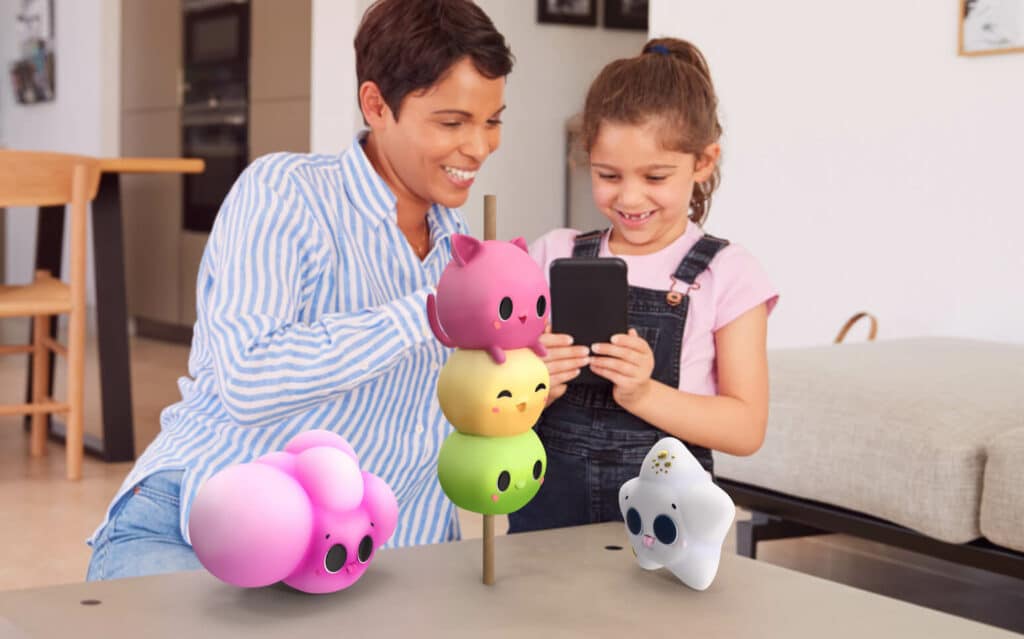
In the realm of 3D visualization, businesses leverage cutting-edge technologies to product visualize and offer product visualization services that go beyond traditional methods. Augmented reality enhances the experience, allowing users to interact with computer-generated 3D or 2D images showcasing a product’s key features. This revolutionizes the manufacturing process and streamlines the creation process, incorporating digital engineering to achieve lifelike and immersive product representations.
What are the key stages of the 3D product visualization process?
The 3D product visualization process is a multi-step process including five different stages, from concept and planning to post-production and optimization.
Let’s take a quick look at the main activities involved at each stage.
Concept and planning
- define project goals and objectives
- gather product information and reference materials, like good product shots
- develop a renovation projects timeline and budget
3D modeling
- create a 3D model and product renderings using CAD software or 3D tools and rendering software (i.e.: Autodesk 3ds Max, Blender, Cinema 4D)
- ensure model fidelity and attention to detail
Texturing and materials
- apply appropriate textures and materials to the 3D model
- perfect color accuracy and realism
Lighting and rendering
- set up life-like lighting conditions
- adjust camera settings and angles
- render high-quality images or animations (most popular tools include KeyShot, V-Ray, Octane Render)
Post-production and optimization
- edit and refine rendered images or animations (with software such as Adobe Photoshop, Adobe After Effects, GIMP)
- optimize visuals for various platforms and devices
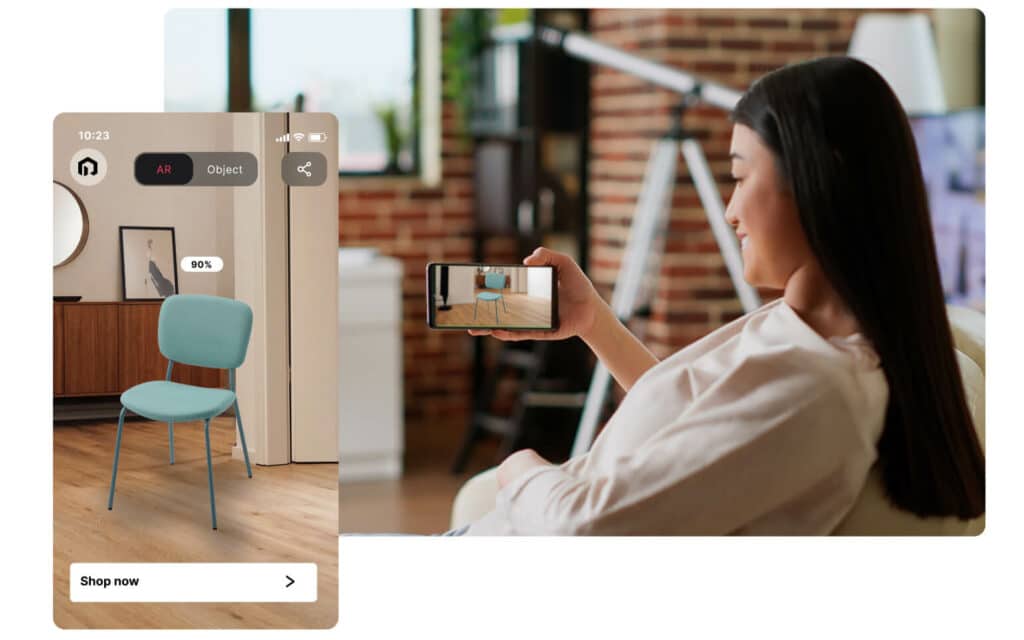
How can you create stunning 3D product visualizations?
Prioritize accuracy and attention to detail
- Ensure your 3D model accurately represents the real product, including the use of high-quality raw materials
- Pay close attention to textures, materials, and colors
Utilize realistic lighting and camera angles
- Experiment with different lighting setups to enhance product features
- Choose camera angles that showcase your product in the best possible way
Keep your target audience in mind
- Tailor your visuals to appeal to your target demographic
- Consider creating multiple visualizations for different customer segments
Optimize your visuals for multiple platforms and devices
- Ensure your visuals are accessible and perform well on various devices
- Adapt your visuals for different marketing channels, such as social media, email, or websites
Test and gather feedback
- Test your 3D product visualizations with a sample audience
- Gather feedback to identify areas for improvement and optimization
Challenges and limitations of 3D product visualization
Technical complexity and resource requirements
Creating high-quality 3D product models can be technically challenging and resource-intensive, requiring skilled professionals and powerful hardware and software.
Anyway, a 3D tool with effortless composition capabilities like RealityMAX can help simplify a crucial part of this process, enabling also beginner users to adjust models and combine them to build gorgeous scenes.

Integration with existing e-commerce platforms
Integrating 3D product visualization with existing e-commerce platforms may require additional development and customization, potentially increasing the cost and complexity of implementation.
Unless you tap into the power of Web 3D with a little help from RealityMAX and its 3D embed feature, that allows basically anybody to easily insert a 3D product visualization into a web page or application.
Ensuring accessibility across devices and platforms
Ensuring that 3D product visualizations are accessible and perform well across various devices (like mobile devices) and platforms requires optimization and testing, which can be time-consuming.
At least before web-based, natively responsive 3D experiences like the ones created with RealityMAX became available. Our light, fast-loading 3Ds don’t require additional software to be viewed and are device-neutral, working with any operating system.
What does the future hold for 3D product visualization?
Emerging trends and innovations
Virtual Reality (VR) shopping
The integration of 3D product visualization with VR technology is expected to create even more captivating shopping experiences, allowing shoppers to explore virtual stores and interact with 3D models of products in a fully immersive environment.
By combining the power of 3D visualization with the interactivity and immersion of VR, businesses online retailers can offer their customers a new level of engagement that transcends traditional online shopping and enhances the brand experience. Let’s call it metashopping.
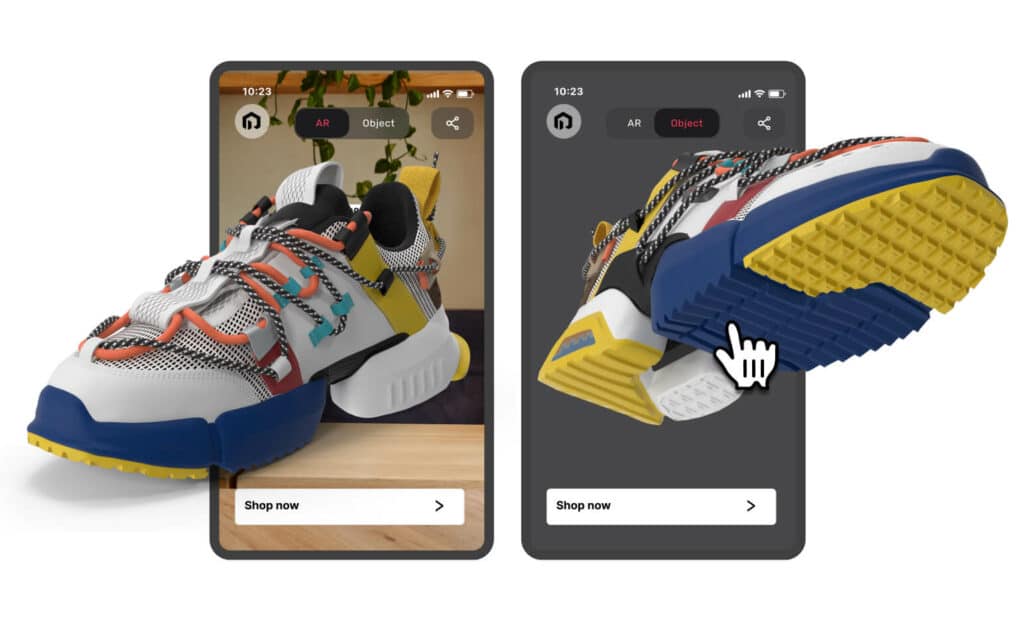
There are several ways in which the fusion of 3D product visualization and VR technology can enhance the shopping experience.
We have mentioned virtual showrooms before; now, if VR-enabled, customers can explore these showrooms using VR headsets or compatible devices, experiencing the products in a way that closely mimics a physical store visit.
In a VR environment, customers can interact with products more intuitively, such as picking up, examining, and even testing the products in a virtual worlds. This level of interactivity helps customers better understand the product’s features, functionality, and overall appeal, leading to customer satisfaction and increased confidence in their purchasing decisions.
VR technology enables businesses to offer a personalized shopping experience based on individual preferences and interests. Customers can explore virtual environments tailored to their specific needs and desires.
The integration of 3D product visualization and VR technology can also facilitate social shopping, allowing customers to virtually shop with friends or family members, regardless of their geographical location. This shared experience can help replicate the social aspect of in-person shopping, enhancing overall enjoyment and engagement.
Artificial Intelligence (AI) in product visualization
AI and machine learning can be used to automate and enhance the 3D product visualization process, enabling customers interact with more realistic and tailored experiences.
There are several ways in which these technologies can contribute to the 3D product visualization process:
- Automated 3D creation: AI algorithms can be used to streamline the process of creating 3D models by analyzing 2D images or CAD in different file formatsd and generating corresponding 3D models. This can save designers significant time and effort while ensuring consistent and accurate representations of the products.
- Real-time rendering optimization: machine learning techniques can be employed to optimize the rendering process, enabling real-time visualization of complex 3D models without sacrificing quality or performance.
- Personalized content creation: AI-driven predictive engines can analyze customers experience and behavior data to generate personalized 3D product visualizations tailored to individual users. This personalization can help businesses better cater to customer needs and create more targeted marketing campaigns.
- Material and texture generation: artificial intelligence can be used to automatically generate realistic materials and textures for 3D models, resulting in more lifelike product visualizations.
- Quality control and error detection: advanced algorithms can be employed to automatically identify and correct errors or inconsistencies in 3D models, ensuring that the final product visualization meets the desired quality standards.
Unlocking True-to-Life 3D Product Visualization with a Free 3D Asset Visualization Studio
Achieving true-to-life 3D product visualization has never been easier, thanks to the emergence of completely free 3D asset visualization studios. These innovative platforms are breaking down the steep learning curve traditionally associated with 3D visualization. They empower businesses to bring their evolving ideas to life in a photorealistic and immersive manner. With these tools, companies can create product visuals that are eye-catching and stay true to life, enhancing engagement and boosting sales.
How is 3D product visualization transforming industries beyond eCommerce and marketing?
The benefits of 3D product visualization are not limited to ecommerce strategy and marketing; industries such as architecture, interior design, automotive, and manufacturing can also leverage 3D visualization to enhance their product offerings and customer experiences.
By incorporating 3D visualization technologies into their workflows, these sectors can improve design processes, communication, and collaboration, ultimately resulting in more innovative and successful products.
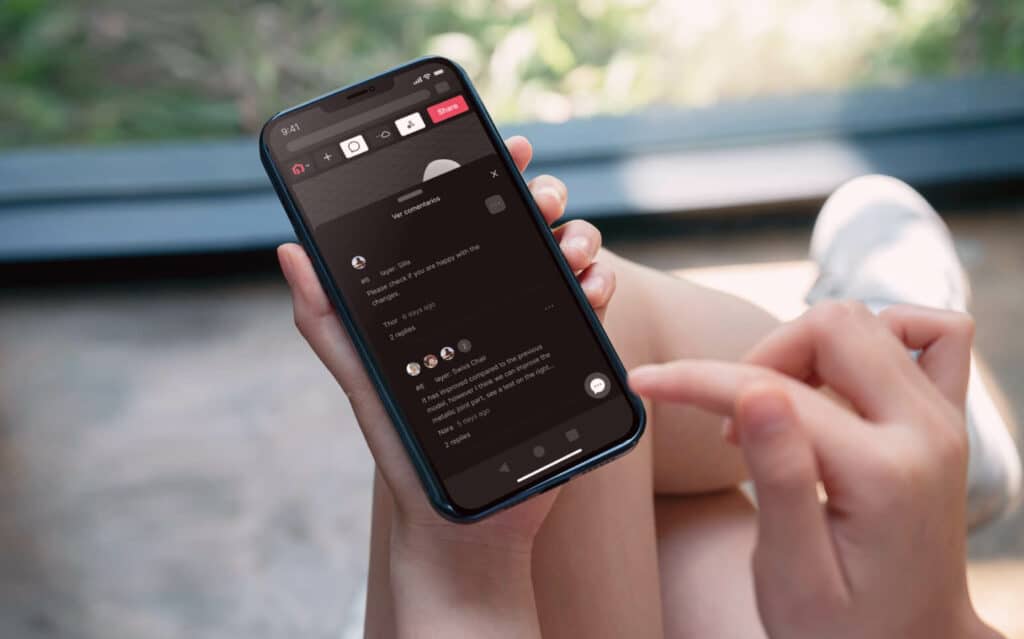
In the realms of architecture and interior design, 3D visualization offers architects and interior designers with the capacity to craft detailed depictions of their work, allowing clients an immersive insight into the eventual result, enhancing decision-making and satisfaction.
This technology extends to providing virtual explorative experiences. Meanwhile, the automotive industry leverages 3D visualization from the design phase to marketing, enabling efficient digital prototyping, testing, and creating interactive user experiences. Similarly, the manufacturing and industrial design sectors utilize 3D visualization for optimized product development, quality assurance, and enhanced collaboration, ensuring a transparent understanding among all stakeholders.
Conclusion
3D product visualization is revolutionizing the way products are designed, marketed, and sold across various industries.
By combining 3D models with other advanced technologies such as AI, machine learning, VR, and other AR apps, businesses can create captivating and immersive experiences that go beyond traditional shopping, bridging the gap between the digital and physical worlds.
From e-commerce and marketing to architecture, interior design, automotive, manufacturing, real estate, and entertainment, 3D product visualization is enhancing product offering, improving design processes, and fostering collaboration.
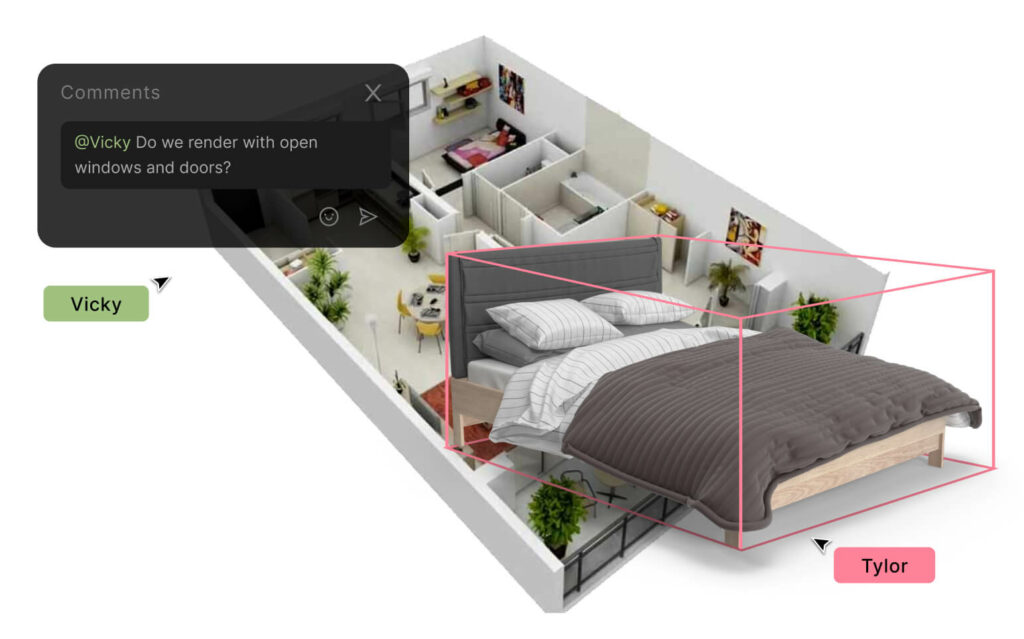
As technology continues to evolve, the adoption of 3D visualization is expected to grow further, completely transforming the way we interact with and experience products.
Businesses that recognize the value of 3D product visualization and proactively adopt these technologies will be better positioned to meet the ever-changing demands of consumers, stay ahead of their competitors, and achieve long-term success in an increasingly digital and technology-driven world.
The best way to achieve these goals? Creating a free account now and getting in touch with our 3D experts via our live chat to get the best advice based on your product visualization needs.
